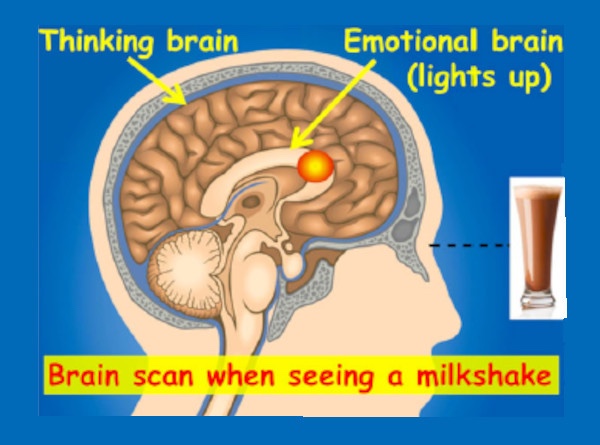Control, the Second C of Addiction

Recently, this space featured a discussion called “Compulsion, the First C of Addiction.” (Peeking ahead, the third C will be Continuation, the tendency of an addict to keep on using, regardless of negative consequences.)
Jed Diamond, Ph.D., derives this alliterative trio from the traits that all addicts have in common. The characteristic up for discussion today is Control, which tends to slip away. Dr. Diamond says, “An addict may try and set limits on their use, but they continually violate them. One ‘taste’ of the drug always leads to more.”
In “Addiction Model Intervention for Obesity in Young People” Robert A. Pretlow, M.D., MSEE, FAAP, and Carol M. Stock, JD, MSN, made it clear that “nervous” eating and other forms of displacement behavior are not the only alternative to stress. The young visitors to Dr. Pretlow’s Weigh2Rock website over the years have been exposed to many techniques that can help avoid the loss of control over their overriding compulsion to binge eat.
People often “cave,” or give in to the urge to do their addictive thing. Dr. Pretlow has written often of ways to cope with the knowledge of having done that, hopefully with the aim of not doing it again ever. Okay, pretend I just polished off two packs of Girl Scout Cookies. What can I do to make up for it? Be extra careful for the next few days. Write that down.
Part of damage control is to think about ways to fix it, and write those down too. And ways to avoid it, so there won’t be a next time. Have I learned anything here? Skeptics may scoff, but there is something about a hand-written message to oneself that has a unique effect on the brain. In a way, it is almost like making a contract with the self. As Dr. Pretlow points out, here is the opportunity to channel energy into damage control:
If you do cave and binge on food, write down or record exactly how you feel afterwards.
And that feeling should not be disgust or disappointment, simply an honest straightforward assessment of what went wrong and your part in it and what you might do differently the next time. This is how control is established, by small increments. Just make sure your assessment is honest, and then,
Save this, so the next time you are about to binge you can read what you wrote or listen to your recording to help prevent it. When you cave, just pick yourself up, brush yourself off, go on, and try again. The more you try, the easier it gets.
Here’s more from Dr. Pretlow. In a 2019 paper, “Displacement Activity,” Dr. Pretlow wrote:
Displacement activity (the addiction behavior) is how the brain has learned to handle significant conflict, and displacement activity is innate, instinct-level, automatic behavior and essentially out of the person’s control, thus compulsive.
That work ended up with this conclusion:
Displacement activity is out-of-context behavior in animals and humans that is used to handle significant conflicts and is mostly out of the animal’s control. Addictive behavior is out-of-context behavior that is used to handle conflicts and is mostly out of the person’s control. There would seem to be a relationship between displacement activity and addictive behaviors, which may prove useful in the prevention and treatment of addictive.
As for the illustration on this page: Dr. Pretlow wrote,
The concept of the emotional brain versus the thinking brain seems to appeal to young people, namely that the emotional brain has control over their overeating. The thinking brain knows that overeating will make them unhappy afterwards, and they need to train their thinking brain to take over their eating control. Participants can talk to their emotional brain, similar to talking to a young child. Comparable to working with a young child, they can acquire ways to deflect their emotional brain from tempting food.
Written by Pat Hartman. First published April 26, 2024.
Sources:
“Are Fat, Sugar, and Salt the New Heroin, Meth, and Cocaine?,” Medium.com, September 22, 2020.
“Addiction Model Intervention for Obesity in Young People,” Weigh2Rock.com, November 10, 2024.
Image Copyright: Weigh2Rock.com




